Antique Advertising Signs
The most valuable and most expensive types of antique advertising items are almost always signs. Antique signs have a way of capturing our attention and making us open our checkbooks unlike any other field of advertising. We have hundreds of antique signs in our price and value database. The one drawback to signs is that many are easy to copy and reproduce. You want to work with experts (like us) if you are attempting to value and authenticate a sign.
Our price guide has several different types of signs. We have values and pictures for porcelain signs, lithograph signs, trade signs, glass signs, and more.
Porcelain Signs: Antique porcelain signs are quickly becoming one of the hottest areas across all fields of collectibles. Thanks to shows like American Pickers and Pawn Stars the general public is finally learning what we collectors have known for years, porcelain signs are cool! Porcelain signs are also extremely durable and mass produced. That means two things. Nothing is truly unique and condition is extremely important. Antique porcelain signs are closely associated with things like gasoline, cars, tobacco, and general retail advertising. A lot of these signs end up in garages and man caves. One thing that makes porcelain signs so desirable is that many of the brands that advertising on porcelain back in the 1930s are still around today.
Antique porcelain signs also come in all shapes and sizes. There are the monster neon signs that can be twenty feet long. Then there are the smaller door pushes, and pretty much everything in between. Valuing an antique porcelain sign comes down to rarity, size, condition, brand, and color. If you get the right combination then the sign could be worth thousands of dollars.
Lithograph Signs: Antique lithograph signs are not necessarily the most popular signs in today’s market, but some can be very valuable. Lithographs are most often found on tin or paper. They were typically used from the 1870s to the very early 1900s. One reason that lithograph signs are rare today is because they were not physically built to stand the test of time. The paper examples are especially vulnerable to damage. The tin signs are easily scratched or rusted out. Rare and valuable lithograph signs are going to be in excellent condition, still have great color, and be on a problem free surface.
Trade Signs: Antique trade signs were used by specialty businesses (usually service related) like jewelers, barbers, or craftsmen. Their trade sign would hang in their window or above their door so that it was visible from the sidewalk. Every trade sign will be unique. Most are handcrafted out of wood. Provenance is especially important with these types of antique signs. A generic barber sign might be worth $200. However, if you can trace that same sign back to a particular barber and know the town and barber’s name then $200 might turn into $2,000. The promoted business also affects the value of the sign. There are plenty of barber signs out there. However, there are very few signs related to region professions like trading, importing and exporting, etc. Trade signs cross over to folk art in a way. It is not unusual for folk art collectors to see a trade sign as a piece of art and less of an advertisement.
Glass Signs: Antique glass signs have a special place in today’s market. Most glass signs are closely associated with breweriana or other beverages. The typical sign is a piece of glass with a frame and a hand painted advertisement. Glass signs are few and far between. Out of all the types of antique signs we have discussed, glass signs are by far the most fragile. Not many were originally produced, and most have been lost or destroyed.
There are other types of antique signs that we have not described above. If you have any questions about your sign, then please contact us. We are experts in the field and we would be happy to tell you what your sign is worth. We are available 24/7 via email. Just send us a few pictures of your sign and we can give you a free appraisal and make an offer.
-
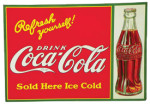 Refresh Yourself Coca-Cola Sign
Refresh Yourself Coca-Cola Sign -
 Regal Flour Sign
Regal Flour Sign -
 Remington Framed Sign
Remington Framed Sign -
 Renault Single-Sided Porcelain Sign
Renault Single-Sided Porcelain Sign -
 Reo Double-Sided Porcelain Sign
Reo Double-Sided Porcelain Sign -
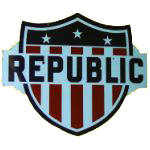 Republic Truck Shield Sign
Republic Truck Shield Sign -
 Richfield Hi-Octane Sign
Richfield Hi-Octane Sign -
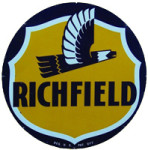 Richfield Oil Eagle Sign
Richfield Oil Eagle Sign -
 Richlube Sign
Richlube Sign -
 Rocky Mountain Auto Trade Ass'n Double-Sided Flange Sign
Rocky Mountain Auto Trade Ass'n Double-Sided Flange Sign -
 Ronald McDonald Die-Cut Sign
Ronald McDonald Die-Cut Sign -
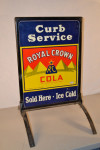 Royal Crown Cola 2-Single-Sided Tin Embossed Signs
Royal Crown Cola 2-Single-Sided Tin Embossed Signs -
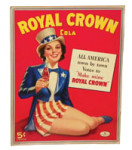 Royal Crown Cola Patriotic Sign
Royal Crown Cola Patriotic Sign -
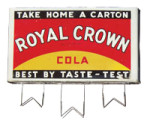 Royal Crown Cola Sign
Royal Crown Cola Sign -
 Royal Crown Cola Sign
Royal Crown Cola Sign -
 Royal Crown Cola Sign
Royal Crown Cola Sign -
 Royal Crown Cola Sign
Royal Crown Cola Sign -
 Royal Crown Cola Sign
Royal Crown Cola Sign -
 Royal Crown Cola Sign
Royal Crown Cola Sign -
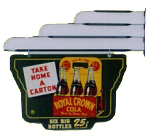 Royal Crown Cola Wall Hangar
Royal Crown Cola Wall Hangar -
 Royal Triton Single-Sided Porcelain Sign
Royal Triton Single-Sided Porcelain Sign -
 RPM Motor Oil Sign
RPM Motor Oil Sign -
 Safety First Red Man Door Push
Safety First Red Man Door Push -
 Safety First Sound Sparton Porcelain Sign
Safety First Sound Sparton Porcelain Sign -
 Safewheels Single-Sided Tin Embossed Sign
Safewheels Single-Sided Tin Embossed Sign -
 Sani Clean Rest Rooms Sign
Sani Clean Rest Rooms Sign -
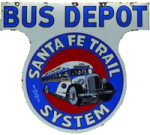 Santa Fe Trail Bus Depot Sign
Santa Fe Trail Bus Depot Sign -
 Santa Fe Trailways Bus Depot Sign
Santa Fe Trailways Bus Depot Sign -
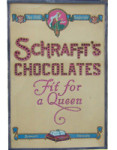 Schrafft's Chocolates Sign
Schrafft's Chocolates Sign -
 Schwinn Built Bicycle Sign
Schwinn Built Bicycle Sign -
 Sealed For You Protection Single-Sided Porcelain Sign
Sealed For You Protection Single-Sided Porcelain Sign -
 Seaside Gasoline Double-Sided Porcelain Diecut Sign
Seaside Gasoline Double-Sided Porcelain Diecut Sign -
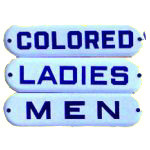 Segregation Era Restroom Signs
Segregation Era Restroom Signs -
 Seiberling Single-Sided Porcelain Neon Vertical Sign
Seiberling Single-Sided Porcelain Neon Vertical Sign -
 Self Service Island & Save! Pay Inside Single-Sided Tin Sign
Self Service Island & Save! Pay Inside Single-Sided Tin Sign -
 Serve Coke at Home Sign Sign
Serve Coke at Home Sign Sign -
 Shamrock Pump Plate
Shamrock Pump Plate -
 Shamrock Pump Plate
Shamrock Pump Plate -
 Shell Aviation Oil Sign
Shell Aviation Oil Sign -
 Shell Aviation Sign
Shell Aviation Sign -
 Shell Double-Sided Porcelain Diecut Sign
Shell Double-Sided Porcelain Diecut Sign -
 Shell Double-Sided Porcelain Shell Shape Sign
Shell Double-Sided Porcelain Shell Shape Sign -
 Shell Marine Strip Sign
Shell Marine Strip Sign -
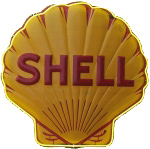 Shell Oil Die-Cut Sign
Shell Oil Die-Cut Sign -
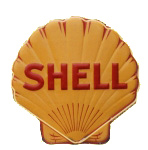 Shell Oil Die-Cut Sign
Shell Oil Die-Cut Sign -
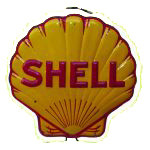 Shell Service Station Sign
Shell Service Station Sign -
 Shell Strip Sign
Shell Strip Sign -
 Shell-Penn Single-Sided Porcelain Clam-Shaped Sign
Shell-Penn Single-Sided Porcelain Clam-Shaped Sign -
 Shop Refreshed Coca-Cola Sign
Shop Refreshed Coca-Cola Sign -
 Signal Gasoline Sign
Signal Gasoline Sign -
 Sinclair Aircraft Sign
Sinclair Aircraft Sign -
 Sinclair Extra Duty Hanging Sign
Sinclair Extra Duty Hanging Sign -
 Sinclair Ford Oil Sign
Sinclair Ford Oil Sign -
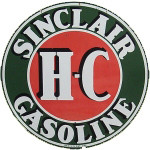 Sinclair H-C Gasoline Sign
Sinclair H-C Gasoline Sign -
 Sinclair Opaline Motor Oil Sign
Sinclair Opaline Motor Oil Sign -
 Sinclair Opaline Single-Sided Porcelain Sign
Sinclair Opaline Single-Sided Porcelain Sign -
 Sinclair Porcelain Sign
Sinclair Porcelain Sign -
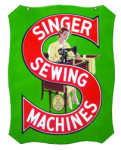 Singer Sewing Machines Sign
Singer Sewing Machines Sign -
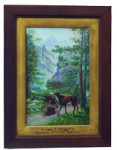 Skagg Co Framed Print
Skagg Co Framed Print -
 Skelly Double-Sided Porcelain Sign
Skelly Double-Sided Porcelain Sign -
 Slow Children Single-Sided Tin Embossed Street Sign
Slow Children Single-Sided Tin Embossed Street Sign -
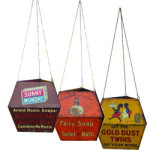 Soap Brand Hanging Signs
Soap Brand Hanging Signs -
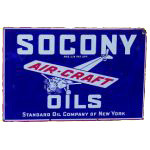 Socony Air-Craft Oils Sign
Socony Air-Craft Oils Sign -
 Socony Double-Sided Porcelain Paddle Sign
Socony Double-Sided Porcelain Paddle Sign -
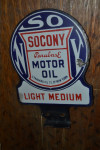 Socony Double-Sided Porcelain Paddle Sign
Socony Double-Sided Porcelain Paddle Sign -
 Socony Double-Sided Porcelain Paddle Sign
Socony Double-Sided Porcelain Paddle Sign -
 Sound Signal for Passing - Sinclair Sign
Sound Signal for Passing - Sinclair Sign -
 Southland Pump Plate
Southland Pump Plate -
 Spark Plugs Cleaned Single-Sided Tin Sign
Spark Plugs Cleaned Single-Sided Tin Sign -
 Specialized Lubrication Service Sign
Specialized Lubrication Service Sign -
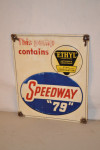 Speedway '79' Single-Sided Tin Embossed Sign
Speedway '79' Single-Sided Tin Embossed Sign -
 Speedway Gas Sign
Speedway Gas Sign -
 Speedwell Motor Oil Porcelain Flange Sign
Speedwell Motor Oil Porcelain Flange Sign -
 Speedwell Motor Oil Sign
Speedwell Motor Oil Sign -
 Spiffy Cola Embossed Sign
Spiffy Cola Embossed Sign -
 Spiral Spring Co. Single-Sided Tin Cardboard Back Sign
Spiral Spring Co. Single-Sided Tin Cardboard Back Sign -
 Spitting Is Unlawful Sign
Spitting Is Unlawful Sign -
 Sprinkler Fire Alarm Single-Sided Porcelain Sign
Sprinkler Fire Alarm Single-Sided Porcelain Sign -
 Squirt Soda Sign
Squirt Soda Sign -
 Standard Lubrite Single-Sided Tin Sign
Standard Lubrite Single-Sided Tin Sign -
 Standard Oil Company Double-Sided Porcelain Flange Sign
Standard Oil Company Double-Sided Porcelain Flange Sign -
 Standard Oil No Smoking Sign
Standard Oil No Smoking Sign -
 Standard Oil Of California Diecut Paddle Sign
Standard Oil Of California Diecut Paddle Sign -
 Standard Oil Of Indiana Curved Pump Plate
Standard Oil Of Indiana Curved Pump Plate -
 Standby Tomato Juice Sign
Standby Tomato Juice Sign -
 Star Cars Double-Sided Porcelain Sign
Star Cars Double-Sided Porcelain Sign -
 Star Tobacco Sign
Star Tobacco Sign -
 State Farm Porcelain Flange Sign
State Farm Porcelain Flange Sign -
 Steinerbru Ale Beer Neon Sign
Steinerbru Ale Beer Neon Sign -
 Sterling Gas Pump Sign
Sterling Gas Pump Sign -
 Stock Dunlop Porcelain Flange Sign
Stock Dunlop Porcelain Flange Sign -
 Stop and Go Coca-Cola Sign
Stop and Go Coca-Cola Sign -
 Strange's A-1 Crystal Oil Sign
Strange's A-1 Crystal Oil Sign -
 Studebaker Double-Sided Porcelain Sign
Studebaker Double-Sided Porcelain Sign -
 Studebaker Erskine Double-Sided Porcelain Diecut Sign
Studebaker Erskine Double-Sided Porcelain Diecut Sign -
 Studebaker Rockne Double-Sided Porcelain Sign
Studebaker Rockne Double-Sided Porcelain Sign -
 Studebaker Sales and Service Sign
Studebaker Sales and Service Sign -
 Studebaker Service Station Sign
Studebaker Service Station Sign -
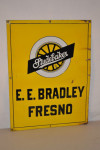 Studebaker Single-Sided Porcelain Sign
Studebaker Single-Sided Porcelain Sign -
 Stutz Double-Sided Porcelain Sign
Stutz Double-Sided Porcelain Sign